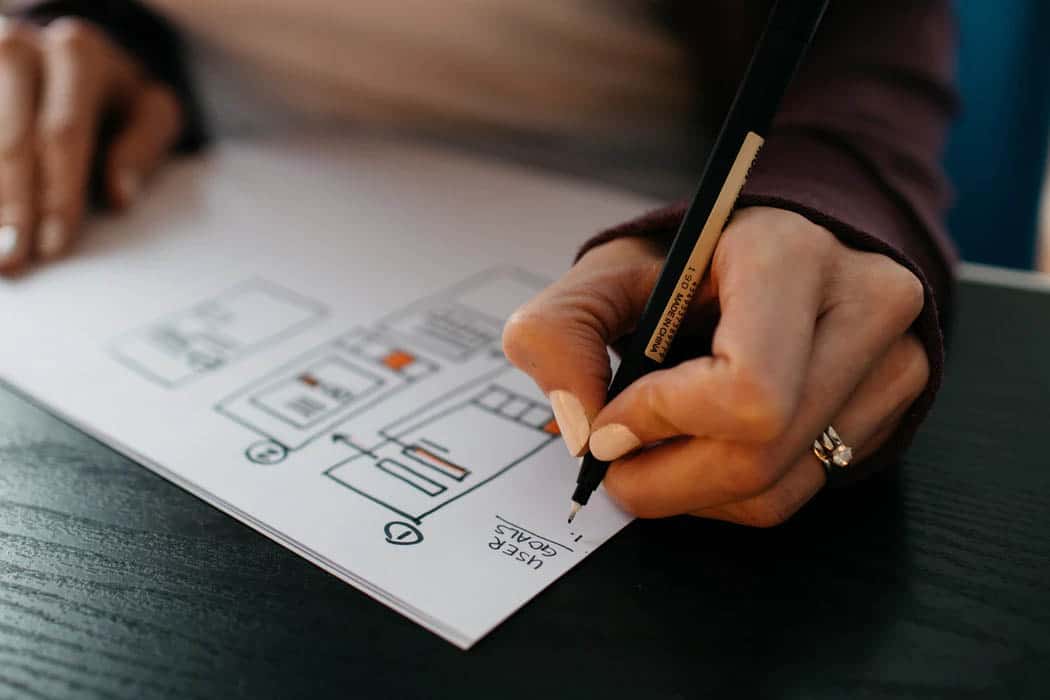
UX and UI may sound similar, but each has a different purpose in the running of a well-made website. Among the key differences is the fact that one is more personal than the other.
UI means “user interface” – this is the images, icons, pages and any other elements a person interacts with.
A UI is built with the purpose to be as intuitive, efficient and easy-to-use as possible. It’s a far-reaching practice that is used for everything from keyboards to smart devices. Wherever a human is interacting with a product or service, UI will be involved.
UX, on the hand, refers to “user experience”. This isn’t the action of how a user interacts with something, but how the experience feels to them.
The term was coined by Don Norman, a cognitive scientist at Apple, who used the term as he felt “human interface and usability were too narrow”.
UX has since evolved beyond its initial definition, encapsulating how a person interacts with something entirely. Whether it’s the structure of a landing page, the tone of a virtual voice assistant or a brand’s colour scheme, UX is whatever someone can experience.
Below, we explain the differences between UX and UI and why they should remain separate.
Why UX and UI Should Remain Separate

Sometimes, designers will try to roll UI and UX into one practice. However, there are clear reasons why UX and UI should remain separate entities when conducting work.
Namely, it’s because they require different skill sets. For example, UX design skills include:
- Strategising
- Persona creation
- Competitor research
- Wireframing
In-depth research
UI design skills, however, differ. These involve:
- Branding
- Colour theory
- Typography
- User knowledge
- Communication skills
Some jobs will utilise both UX and UI design. However, they both need to be treated independently. While they interact closely, each requires a high level of expertise to perform well.
UX vs UI: The Differences Between Them

So, UX is all about the impression someone gets when interacting with something. UI, on the other hand, is how the action takes place. However, queries such as “UI vs UX” and their interchangeable definitions implies there is confusion around these different practices.
Below are some differences between UI and UX with examples.
UX Focuses On Problem Solving, Not Looks
UX can make a site move from functional to excellent. Users will bounce off of a site with poor UX but good UI – this is because UX solves the problems websites have. It’s all well and good having a visually appealing UI, but if your website is confusing, frustrating or unclear to use, then users aren’t going to be happy.
This isn’t to discount the importance of UI. It simply means the biggest difference between UX and UI is their purpose: UI makes things appealing, but UX makes them usable.
The difference is illustrated best in how a UX designer and UI designer undergo their work.
A UX designer will begin with considering user flows, setting up wireframes and, usually, an extremely detailed level of research. A UX designer will spend a significant amount of time getting in the head of the website’s users, testing prototypes and creating personas.
A UI designer is simply there to make sure the website hits the client’s brief, as well as express their artistic talents. However, a UI designer is limited in their work by what the UX designer and research states.
Don’t get us wrong – UI is important. However, it doesn’t concern itself with the same level of problem-solving as UX design.
UX and UI: Similar Ideas, Different Workflows
As one of our resident UX experts Consuela Onighi said on our blog post ‘How to Become a UX Designer’, “designing is about 40% of the job”.
The majority of a UX designer’s work is strategy-based. This means the entire workflow differs from a UI designer. While a UI designer will focus on establishing visual hierarchies, typography sets and colours, a UX designer will undergo user ideation, user pattern analysis and be a central part of a website’s testing.
To be a good UX designer, you need to understand people and human behaviour. That means testing your theories with real users where possible and having plenty of conversations with developers, bouncing ideas around to reach the best results.
On the other hand, to be a good UI designer you need to know what people like. This doesn’t require the deep understanding of human behaviour that UX demands, but it does require a deeper knowledge of what’s popular and what people will respond well to.
UX Usually Comes First
The UX designer makes the functional skeleton of the website; the UI designer is all about building something appealing on top of that skeleton.
For this reason, you never want the UI design to start first. If UI is governing how UX acts, then it’s a case of form over function, and it is highly likely that the website or product will be sub-par.
A key difference between UX and UI is the level of problems they attempt to solve. UX provides solutions on a macro-level, but UI provides solutions on a micro-level. UI design cannot function without the macro-sized problems being solved or strategised first.
Get UX Design From The Experts
We know what it takes to deliver effective UX design. From structural wireframes to flexible design, we use UX and UI to deliver memorable digital experiences.
Discover our UX design solutions today.













